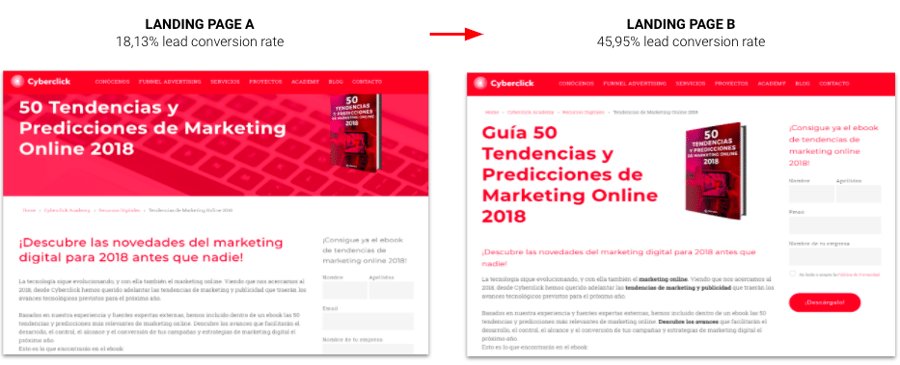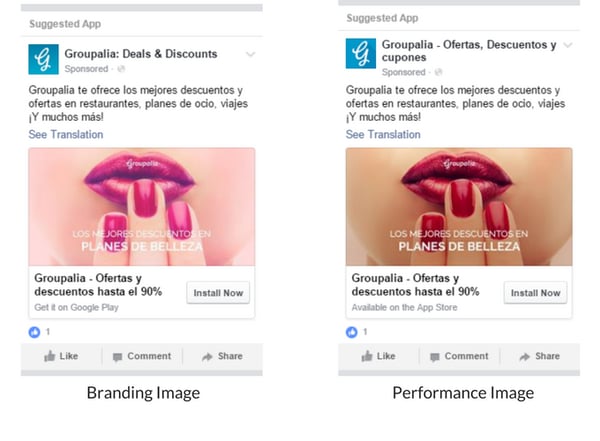By Laia Cardona, on 8 October 2020
If you want to optimize your marketing efforts and make the absolute most of your budget, A/B testing is your secret weapon. It is a very simple and easy-to-use methodology, which only requires a little bit of organization, consistency and discipline. Thanks to these tests, you can improve each element of your marketing campaign until you are sure you are publishing the perfect content at the perfect time.
A/B testing is an opportunity you simply cannot miss out on. So today we are going to take a look at what exactly these tests are, how to set them up, what to do and what not to do, and even one of our own examples. Let’s get to it!
What is A/B Testing?
A/B testing in marketing is simply the process of testing two variations of any given element in a marketing material. You then compare the success of each variant in order to make conclusions and apply the most successful result. Although it can be used with any type of content, it is typically most popular when designing and launching emailing campaigns and landing pages.
The process is very simple: Create two versions of the same content that differ in only one element (For example different background images, colors, headline, etc.), launch both at the same time, and then compare which one works better by observing the metrics and results.
 A/B Test Example of Cyberclick's Spanish landing pages
A/B Test Example of Cyberclick's Spanish landing pages
You can run A/B test independently, or use platforms that have A/B testing tools. The most common A/B testing tools include HubSpot, Google Analytics (tutorial below), and Google Optimize.
Benefits of A/B Tests
- Increases profitability: A/B tests are one of the most accessible and easiest ways to increase your ROI in a short period of time. Thanks to these tests, you can understand what actually works to increase conversion. Increase your campaign’s effectivity by incorporating these changes and conclusions to your new campaigns from the very beginning.
- Controlled innovation: In the marketing world innovation is crucial, but blindly jumping into the unknown can be quite risky. By using a solid A/B testing strategy, you can implement innovative changes in a controlled and measurable way, using only what you know actually works for your brand.
- Improves credibility: There are different elements that you can incorporate into your content to show your users that they can trust you. It may be a simple quality seal from an official organization, a reference to one of the people behind your company, a testimonial… The truth is that different tests work better with different audiences, and A/B testing lets you identify which ones really matter to your audience.
- Gets the copy right: Copywriting is an art, but systematic testing lets you add a scientific edge to it. Don’t just experiment with you landing page title or email subject: try out different lengths of text, sales arguments or even your tone.
- Takes care of the details that matter: Something as simple as the color of your Call-to-Action button or the size of an image can have an impact on your conversions. With the right testing, you can identify and apply the small details that will make your sales grow.
- Increased audience knowledge: No two brands are the same… and, as such, no two audiences are the same. The only way to really get to know your target audience is by experimenting. Little by little, you will find a way to win over their hearts and improve both your results and your brand image.
- Build loyalty: Last but not least, remember that A B tests are not only for getting your first conversions, but you can also use them in your loyalty strategy. Optimize your marketing to your customers to stay forever!
A/B Testing Example
To conclude, here is an example of A/B testing to publish more effective social media advertising campaigns.
Given the huge amount of content that users are exposed to on social media, getting users to click on your ad can be quite the challenge. To do so, it is essential to stand out with an image that attracts user's attention.

For our test, we launched a series of Facebook Ads whose images responded to two variants: one followed the brand's style guide (left), while the other was created with a 100% performance approach (right). The second images had the following characteristics:
- Use strong contrasts and striking colors that stand out visually in the platform
- Not abuse image filters, as they dilute the strength of the image.
- Ensure legibility and control the overlap of visual elements, logos and text.
- Include discounts and discounted prices as part of the image, not just in the copy.
The result: The performance-focused image (right) achieved 35% more CTR and more than double the ROI in terms of sales and revenue. This information allowed us to feel more confident in breaking the traditional branding images and using the images that actually brings in results.
A/B Testing Tools: Google Analytics
So you’re convinced - but what now? There are a large variety of A/B testing tools in the market, so you are sure to find one that will fit your needs. To start off, let’s take a look at how to use this kind of testing to improve your conversions on Google Analytics.
With Google Analytics’ Optimize tool, you can easily run a A/B test within your web page, by following these steps:
- Define your experiment: Decide which page you want to test and what is the first element you want to test. Generally, the simplest way to create two versions of the page is by duplicating it and changing only the element you wish to test. You can test an already launched page and a new version, or create a page with two versions from scratch.
- Establish your experiment’s settings: In Google Analytics, you can configure various aspects of your tests: the goal, the percentage of visitors included in the experiment, the time for which it will be active or even the confidence level of the results.
- Ready to launch: Once you publish your experiment, visitors will be shown one of your two versions, chosen randomly, and the visitor will never know they are part of a test. If the user returns to the page and has a cookie in their navigator, they will always be shown the same version.
- Analyze results: As you receive visits, Analytics saves the results. Whenever you are ready, you can check the metrics of both versions and see which one works better. From here on, you can make your decision about keeping or chanin the tested element… and move on to the next test
Hopefully after reading the rest article, you now feel more comfortable conducting A/B tests with your own marketing materials. Once you start testing, you won't want to stop!


